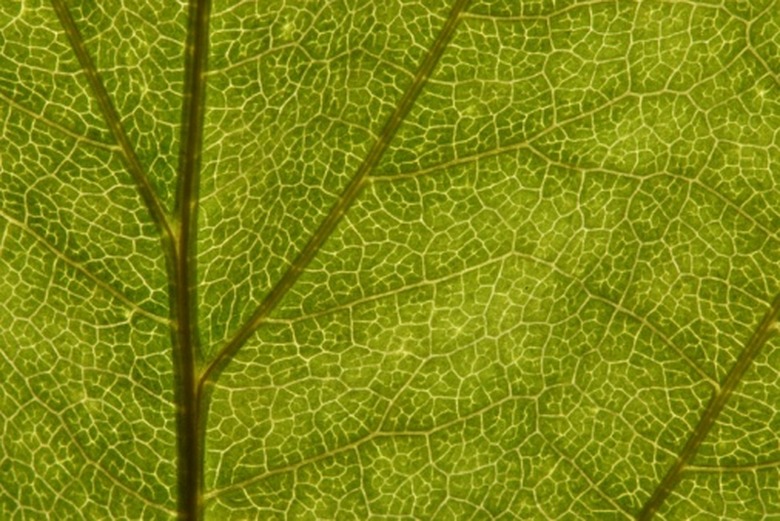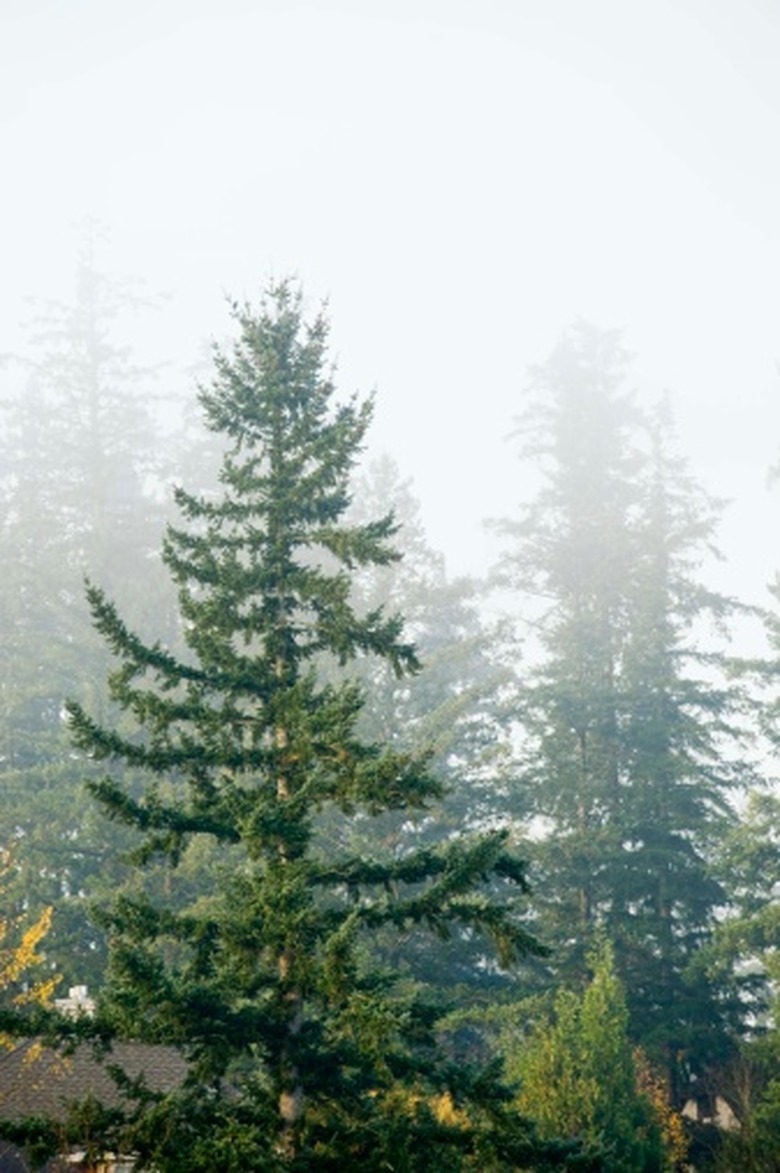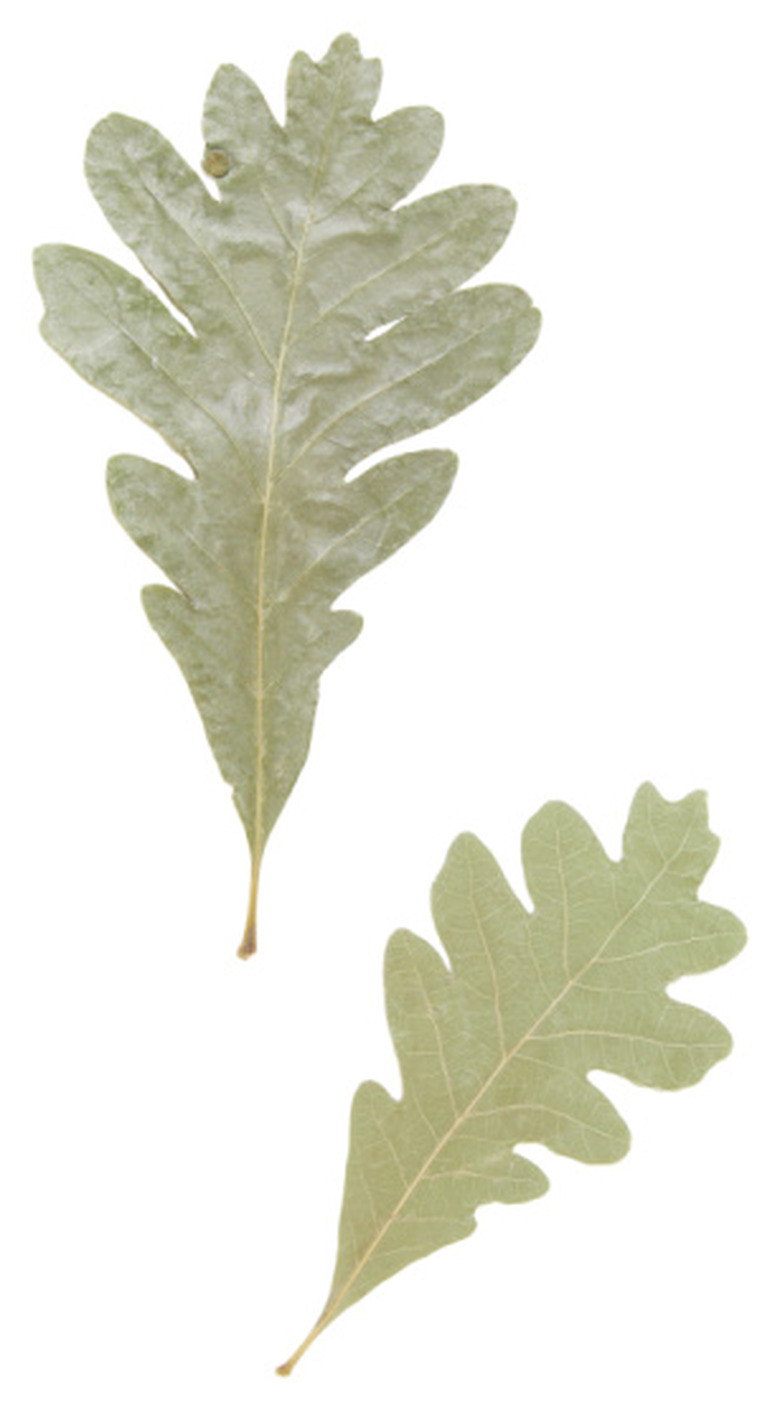What Is The Difference Between Needle Leaf And Broad Leaf Trees?
The purpose of a tree's leaves, whether needle or broad, is to enable the intake of carbon dioxide and the outtake of oxygen and to collect sunlight to fuel the process of photosynthesis. Tiny openings on the surface of the leaves, called stomata, open and close to allow the entrance of carbon dioxide. The essential sugars required for growth are produced when sunlight and carbon dioxide are combined. The open stomata shed water through respiration.
Ideal Conditions
For continuous growth, photosynthesis would have to occur year round. This could only happen if every day was sunny, warm and humid. Under these conditions, the leaves could collect sunlight without losing too much water and would not have to withstand the subzero temperatures present in northern winters. Ideally, all soil would be rich in nutrients to support broadleaf development and the trees would not have to adapt to changes in climate.
- The purpose of a tree's leaves, whether needle or broad, is to enable the intake of carbon dioxide and the outtake of oxygen and to collect sunlight to fuel the process of photosynthesis.
Needle-Leaved Trees
Needle-leaf trees, or conifers, have long, thin leaves that resemble needles. The leaves remain on the tree year-round and are replaced slowly and continuously rather than all at once. The smaller, tighter needles are more waterproof and wind tight than the larger, wider leaves found on broadleaf or deciduous trees. Needles are less tasty to insects and are therefore harder to destroy. Conifers do not need a big boost of nutrients for spring leaf growth and can survive in poorer soils with less water.
Broad-Leaved Trees
Broad-leaved trees live in areas where the soil is nutritious enough to produce a new set of large, sun-collecting leaves every spring. Photosynthesis occurs at a rapid rate while the sun shines and the weather remains warm. The cooler weather of autumn reduces essential sugar production, the leaves lose the green chloroplast cells needed to capture sunlight, various, underlying colors appear and the leaves fall to the ground. Energy moves into the roots, and the tree enters its winter dormancy.
- Needle-leaf trees, or conifers, have long, thin leaves that resemble needles.
- The cooler weather of autumn reduces essential sugar production, the leaves lose the green chloroplast cells needed to capture sunlight, various, underlying colors appear and the leaves fall to the ground.
Exceptions
Tamarack and larch trees are deciduous conifers. These trees have needles that turn a golden color and drop off in the fall in preparation for the cold winter months. The live oak has broad leaves but is an evergreen because it does not shed its leaves in the fall. The live oak grows in warm, humid areas and therefore does not require dormancy. The quaking aspen is a deciduous tree that loses its leaves but continues to produce winter food using chlorophyll in its bark.


